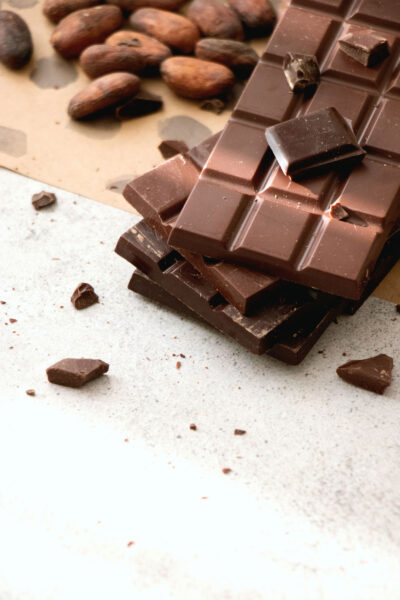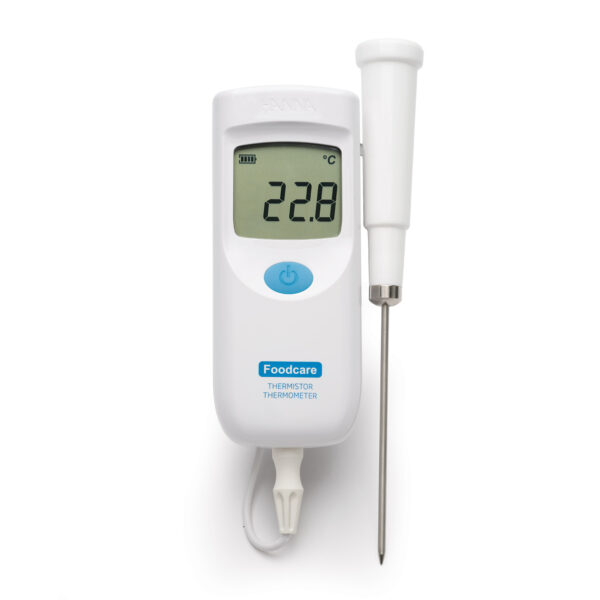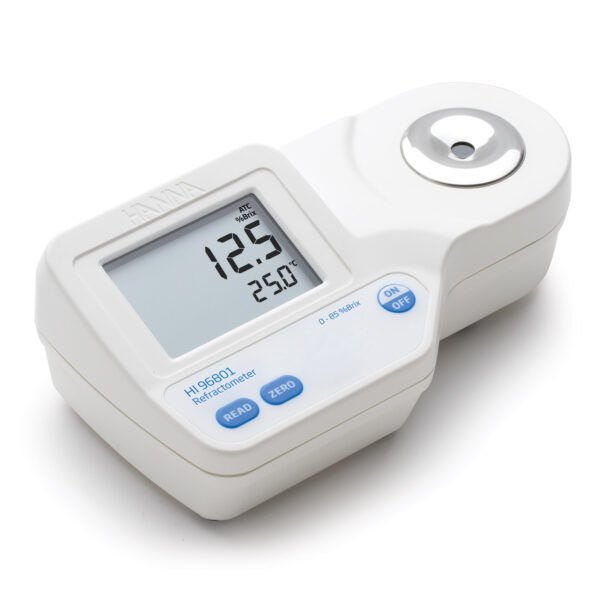The chocolate industry is largely marked by cocoa production. Cocoa is one of agricultural crops, which can be profitably grown only in the tropical climates area. Climate, for growing cocoa must be a warm, humid tropical climate. The soil must be moist and loose, rich in potassium, calcium, phosphorus and iron. It grows best at a temperature of 25 to 32 ° C and at an altitude of up to 600 m.

After harvesting the cocoa, the cocoa beans are covered with banana leaves or branches and left on the pile for 2-6 days. Thus begins the fermentation of cocoa beans and it lasts 5-10 days. During fermentation, anaerobic fermentation and hydrolysis of pulp pectin occur.

During the time the pH drops around 3.6 and the temperature rises (spontaneous fermentation occurs ar a temperature of 45-52°C). Fermentation also produces acetic acid, which is crucial for the destruction and inactivation of sprout in cocoa beans.

For temperature monitoring Hanna Instruments has simple solution HI148 Waterproof datalogger.
From storage to shipping, it’s important to monitor the temperature of your products to ensure that they are being stored in optimal conditions. Quick to set up, simple to use, the HI148 Thermologgers are ideal for monitoring temperature in applications such as food processing, transportation, museums, and horticulture.
The proportion of water in raw cocoa beans after fermentation is 55-60%, and must be reduced to 5-7% to reduce the action of enzymes and encourage the formation of color, taste and smell of any beans. That is why drying of cocoa in the sun or in dryers is carried out. After drying it is necessary to check the amount of water in the grain.
In further cocoa bean technology, it is roasted in roasters and crushed, separating the beans from the shell. Roasting is the thermal treatment of cocoa beans with the aim of reducing the acidity and bitterness, and the water content of the beans to 1-2%, and the ultimate goal is to shape the cocoa aroma and taste and reduce the strength of the beans.
At this stage of production it is also necessary to control the amount of water.
Hanna Instruments has the ideal solution for this application.

For scientists and professionals who need exact water content determination from 0.01 to 100%, our new generation of the Volumetric Karl Fischer Titrator is engineered to meet or exceed your technical requirements while delivering a lower cost of ownership. With cutting-edge features packed into a compact design, this titrator delivers accurate results and requires less space in the lab. Get accurate water content determination at the push of a button. Designed for the modern lab, the HI933 Karl Fischer titrator is the perfect fit for your testing environment.
After the production of cocoa mass and what kind of butter, the production of chocolate begins.
The mixture is prepared by adding all the essential components (such as powdered sugar, cocoa mass, cocoa butter, powdered milk and other additives). The chocolate mass mixture is then rolled, after which a raw chocolate mass is formed, which then enters the concreting process and a chocolate mass is formed.

During conching, the content of water decreases (from 1,6% to 0,6-0,8%), but also any undesirable substances such as acetic acid and aldehydes. After conching, an important process in chocolate production follows, and that is tempering. During tempering, the centers of the solid fat crystals in the melt are transformed into the desired stable crystalline form. The tempering process involves heating the mass to 50 ° C, then cooling to 29 ° C and reheating to 32 ° C.The last significant process in chocolate production is cooling in molds where solidification into a constant form occurs.

For measuring temperature during production of chocolate you can measure it with Foodcare Thermistor Thermometer ・ HI93501
Designed with user functionality and performance in mind, the HI93501 is a waterproof thermistor thermometer that measures temperature from -50.0 to 150.0°C (-58.0 to 302.0°F). The included batteries provide up to 4500 hours of continuous use. CAL Check™ and the Battery Error Prevention System (BEPS) ensure the highest level of accuracy and confidence. The probe is replaceable and works with an assortment of specialized probes. This meter can be certified as traceable to NIST standards upon request.
Very often, total soluble solids (sugars) are measured in chocolate. They give us the values of sugar in chocolate, that is, they tell us about the taste that will prevail in chocolate. Bitter chocolate will have lower Brix value, which is an indicator of the total soluble solids.

For measuring Brix value in chocolate use Hanna Instruments HI96801 Digital Refractometer for Brix Analysis in Foods.
The HI96801 is a rugged, portable digital refractometer for food products designed to report the sugar content of aqueous solutions as % Brix. The HI96801 report the results with an accuracy of ±0.2% Brix. The operation of the meter is simplified with only two buttons: one button is to calibrate with distilled or deionized water and the other to take a measurement. All readings are automatically compensated for temperature variations according to the ICUMSA Methods Book standard and displayed within a 1.5 second response time. The sealed flint glass prism and stainless steel well are easy to clean. Just wipe with a soft cloth in preparation for the next sample.



